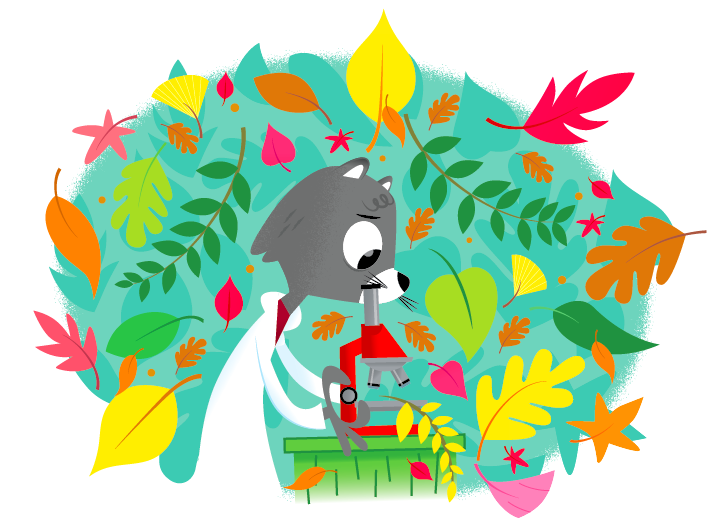Dear Nadia,
A lush tropical rainforest, a field of sunflowers, a garden in your neighborhood. Our Earth is home to all kinds of plant life. From trees to catnip, there are thousands of different species of plants. Most of these plants are green, but not all of them.

That’s what I found out from my friend Linda Chalker-Scott. She’s a professor of horticulture at Washington State University who knows a lot about how plants work.
Chalker-Scott said plants are green because they have chlorophyll, a natural pigment that gives them their color. A plant is made up of millions of cells. Inside some of these cells we find chlorophyll.
If you remember our question about why the sky is blue, you know that sunlight is a combination of all the colors of the rainbow. This light bounces, reflects, and gets absorbed in ways that lets us see a ton of different colors.
Chlorophyll is really good at absorbing red and blue light. But it doesn’t absorb the green light. Instead, the green light is reflected back to us, so that’s what our eyes see.
If you are anything like me, you might be looking for the first signs of spring. It’s still a little snowy here where I live, but when we look close we can find some green popping out of the ground.
These plants are taking in the sunshine. As plants suck water up through their roots, they are also grabbing stuff from the air called carbon dioxide. They use these ingredients to make special sugars to survive. This process also ends up making oxygen for us to breathe. Sunlight drives this whole reaction, called photosynthesis.
It doesn’t just happen on land. Photosynthesis is going on in our oceans, too. Little algae and plant-like organisms known as phytoplankton also use chlorophyll to make their own fuel. They produce about half of our planet’s oxygen, too.
But, I wondered, what about those plants that don’t have chlorophyll? How could they survive if they couldn’t capture sunlight? Chalker-Scott told me about plants like Indian pipe, which are white and pine drops, which are brown.
They don’t have the tools needed to capture energy from the sun and make their own food. Instead, they feed on the roots of surrounding trees. They are plant parasites.
We also find plants with red, purple and yellow leaves. They still have chlorophyll, Chalker-Scott said, but other colors mask the green.
What plants, flowers, and trees are in your backyard or neighborhood? Send in a drawing or picture of your own plant collection to Dr.Universe@wsu.edu.
Sincerely,
Dr. Universe